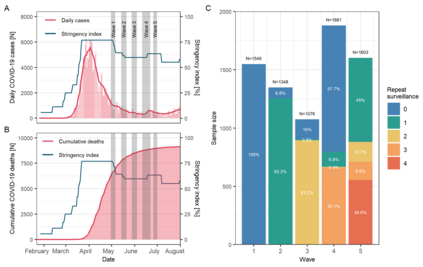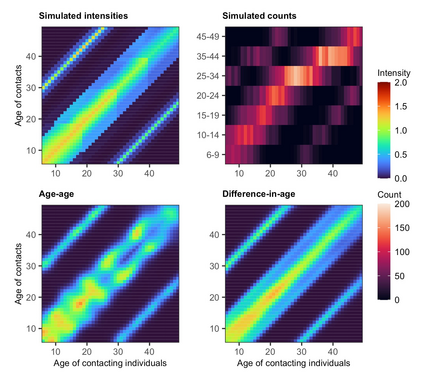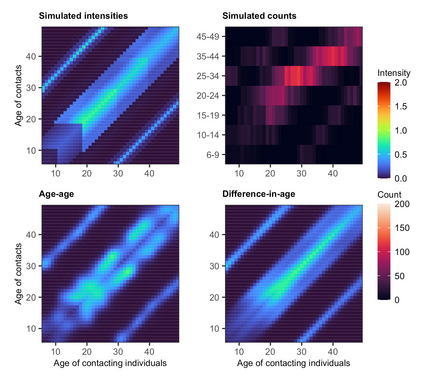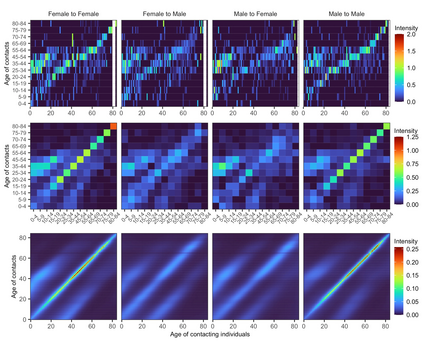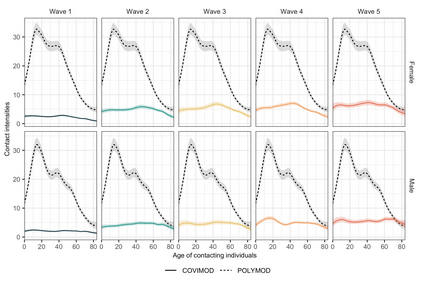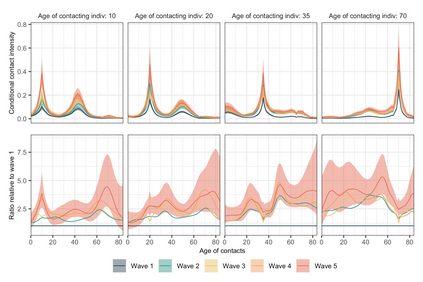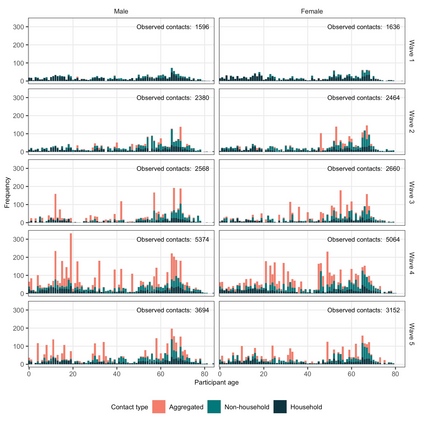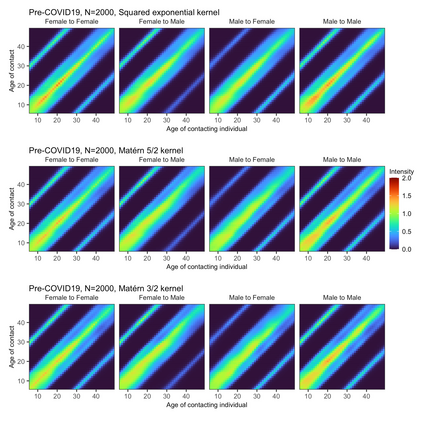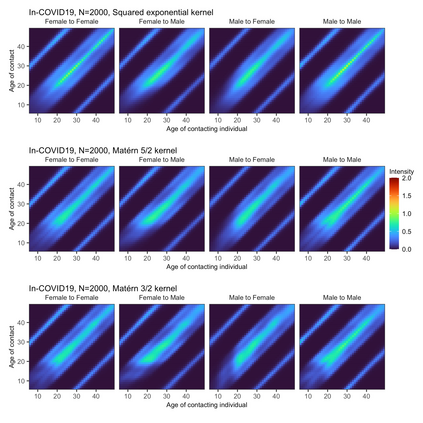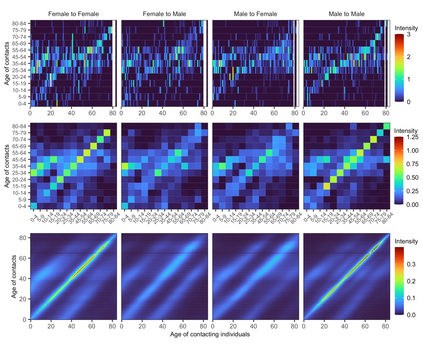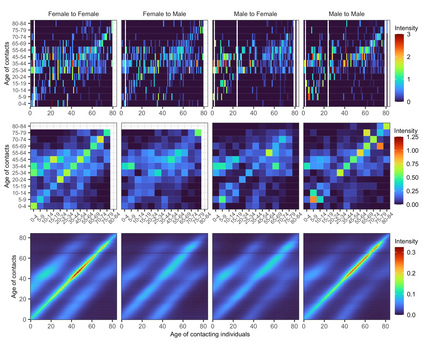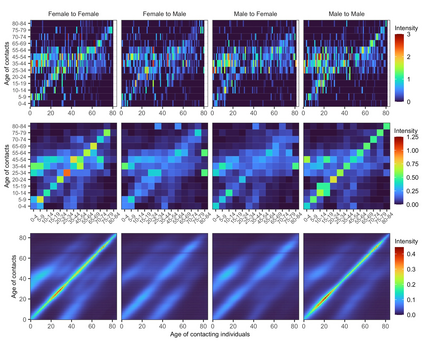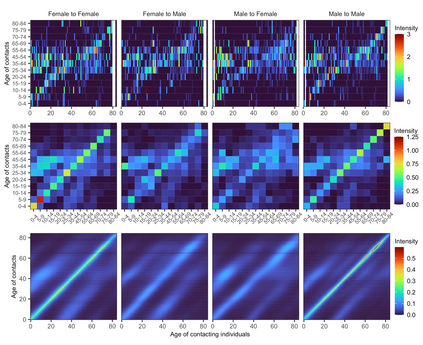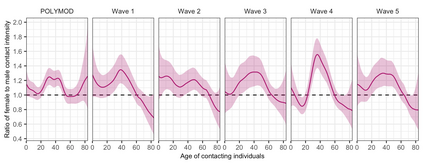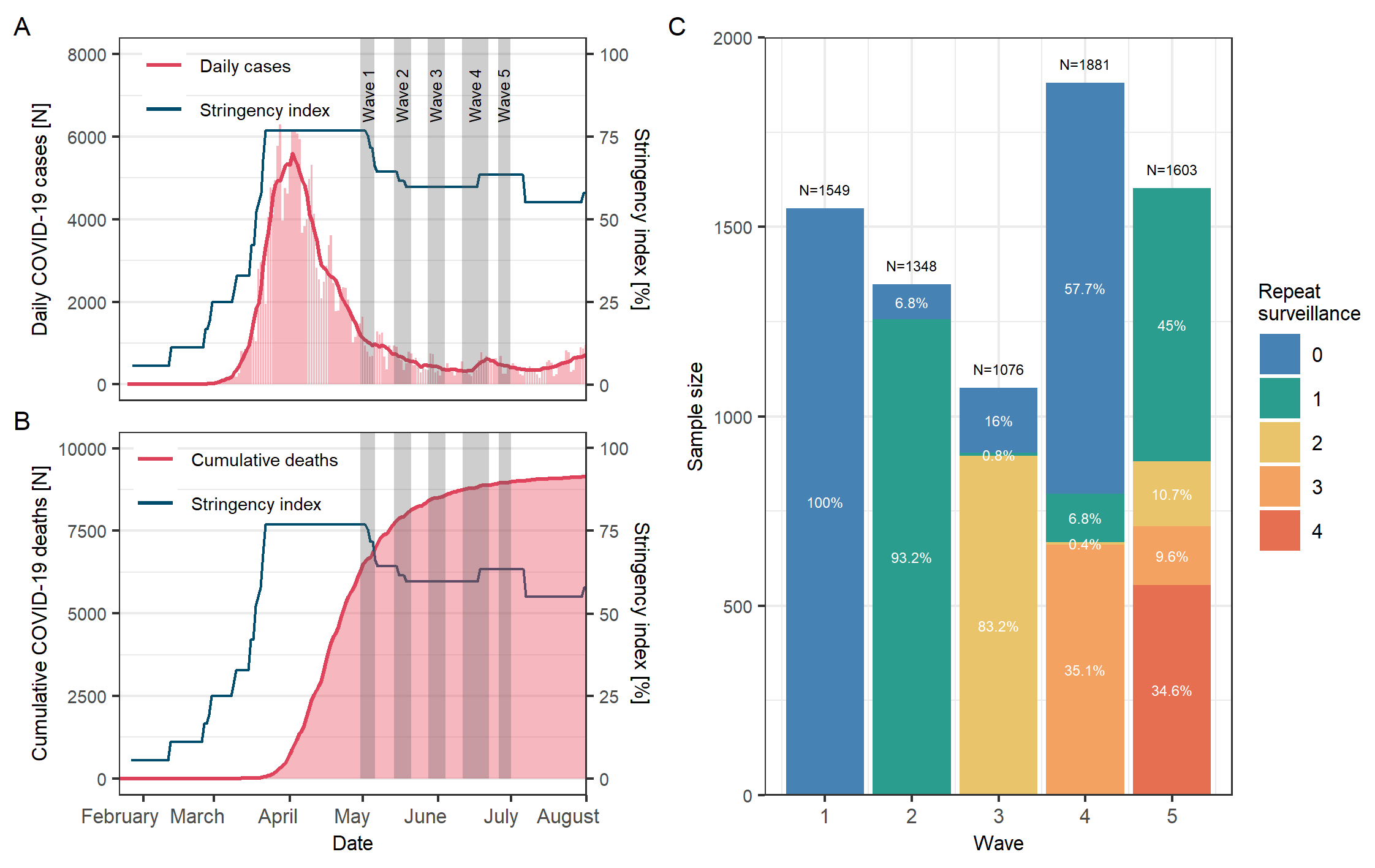Since the emergence of severe acute respiratory syndrome coronavirus 2 (SARS-CoV-2), many contact surveys have been conducted to measure changes in human interactions in the face of the pandemic and non-pharmaceutical interventions. These surveys were typically conducted longitudinally, using protocols that differ from those used in the pre-pandemic era. We present a model-based statistical approach that can reconstruct contact patterns at 1-year resolution even when the age of the contacts is reported coarsely by 5 or 10-year age bands. This innovation is rooted in population-level consistency constraints in how contacts between groups must add up, which prompts us to call the approach presented here the Bayesian rate consistency model. The model incorporates computationally efficient Hilbert Space Gaussian process priors to infer the dynamics in age- and gender-structured social contacts and is designed to adjust for reporting fatigue in longitudinal surveys. We demonstrate on simulations the ability to reconstruct contact patterns by gender and 1-year age interval from coarse data with adequate accuracy and within a fully Bayesian framework to quantify uncertainty. We investigate the patterns of social contact data collected in Germany from April to June 2020 across five longitudinal survey waves. We reconstruct the fine age structure in social contacts during the early stages of the pandemic and demonstrate that social contacts rebounded in a structured, non-homogeneous manner. We also show that by July 2020, social contact intensities remained well below pre-pandemic values despite a considerable easing of non-pharmaceutical interventions. This model-based inference approach is open access, computationally tractable enabling full Bayesian uncertainty quantification, and readily applicable to contemporary survey data as long as the exact age of survey participants is reported.
翻译:自严重急性急性呼吸系统综合症冠状病毒2(SARS-COV-2)出现以来,已经进行了许多接触调查,以衡量面对流行病和非药物性干预措施时人类相互作用的变化。这些调查通常是纵向的,采用不同于流行前时代的规程。我们提出了一个基于模型的统计方法,可以在1年的分辨率上重建接触模式,即使接触年龄被粗略地报告为5岁或10岁年龄组。这种创新的根源在于人口水平的连贯性限制,即群体之间接触必须如何增加,这促使我们调用这里提出的巴伊西亚州汇率一致性模型。这些模型通常采用计算高效的Hilbert Space Gausian程序,在推断年龄和性别结构社会接触的动态之前,我们提出了一种基于模型的统计方法,可以根据接触年龄粗略地用5岁或10岁来重建接触模式。我们从以足够准确和完全巴伊斯为基框架的粗略数据来量化不确定性。我们调查了在Bayeseral Instital Procial-lax lax lax lax lax s requistal constal laction lader rem remal laction dal laction dal laction laction dal laction laction ex ex laveal dal laction.我们调查在德国在4月5 4月 4月 4月 4月 和在社会接触结构中收集到2020年7月中的社会接触的早期分析了社会接触的早期分析方法展示了社会接触。

